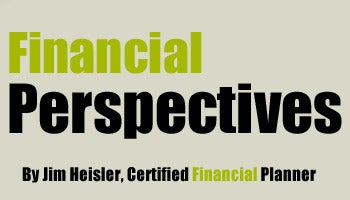Are you putting enough money away? [Financial Perspectives]

Planning for retirement has become much harder for the average person now compared to the way it was 30 years ago. The demise of most corporate pension plans has pushed responsibility for retirement entirely on the employee. It used to be that a person could work 20 to 30 years for the same company and then begin collecting a pension. And if they were lucky, they even had healthcare to cover them until Medicare kicked in.
The process now entails employees contributing to 401k or 403b-type plans, and if they are lucky, some portion of their contributions are matched by their employer. The determination for how much money they will need at retirement rests entirely on them. Also, due to the rising costs of healthcare, many employers have reduced or eliminated these benefits in retirement. The lack of support available for employees who are trying to plan for retirement is putting millions of people at risk.
Recent media reports indicate that account balances in retirement plans have risen appreciably over the past couple of years. This is positive news, but it does not get to the heart of the issue, which is that the bulk of our fellow citizens are putting away significantly less than what they will need at retirement.
Some realize this and their response to the risk is to plan to work well past normal retirement age. The problem with this logic is that it ignores the possibility that a disability or illness will force them into retirement at a younger age (leaving them ill-prepared). Some others really have no concept of preparing for retirement and are likely contributing very little or nothing to a retirement account.
The implications for this could be significant for our society. Think about what the future could look like when we have the majority of the 70 million-plus baby boomers in retirement and many may not have enough money to take care of themselves. This could become a huge issue for our country that may require some type of government bailout, which could have drastic consequences for our economy. We already know with certainty that we will not be able to support our social service programs (Social Security and Medicare) based on the current program formats and the expected demographic changes.
These two issues coupled together are akin to us knowing with certainly that an asteroid is on target to hit the earth and we feel powerless to stop it. There is no doubt it will be an uphill battle for us to stop the asteroid, but each of us can create our own safety plan.
We may need help from others (professionals) to get our plan it place, but down the road you will be glad you did. When you do a simple projection of what your current retirement savings level could be 25 or 30 years into the future you may find that you are significantly underfunding your retirement program. A short-term goal would be to work your way up to putting 10 percent of your pay into your retirement account each year. The quicker you can get there the better. If you are already there, try to work towards putting away the plan maximum, which is $17,500 for 2013 plus $5,500 in additional money for those 50 and older.
Putting away this much may seem impossible, but when you think about the possibility of running completely out of money in your early 70s, you may see things differently.
Good luck with you planning!
The views expressed are not necessarily those of Cambridge and should not be construed as an offer to buy or sell any security.
Jim Heisler, CFP®, CDFA™, CASL™ Family Wealth Services, LLC 8725 Frankford Avenue Philadelphia, PA 19136 jim@familywealthservices.net 215-332-4968
Jim Heisler is a Certified Financial Planner with Family Wealth Services in Holmesburg. You can read all his Financial Perspective columns here.
WHYY is your source for fact-based, in-depth journalism and information. As a nonprofit organization, we rely on financial support from readers like you. Please give today.






